 by "ttyymmnn" (ttyymmnn)
by "ttyymmnn" (ttyymmnn)
Published 04/07/2017 at 12:35
 by "ttyymmnn" (ttyymmnn)
by "ttyymmnn" (ttyymmnn)
Published 04/07/2017 at 12:35
Tags: Planelopnik
; planelopnik history
STARS: 8
Welcome to This Date in Aviation History , getting you caught up on milestones, important historical events and people in aviation from April 5 through April 7.
!!! UNKNOWN CONTENT TYPE !!!
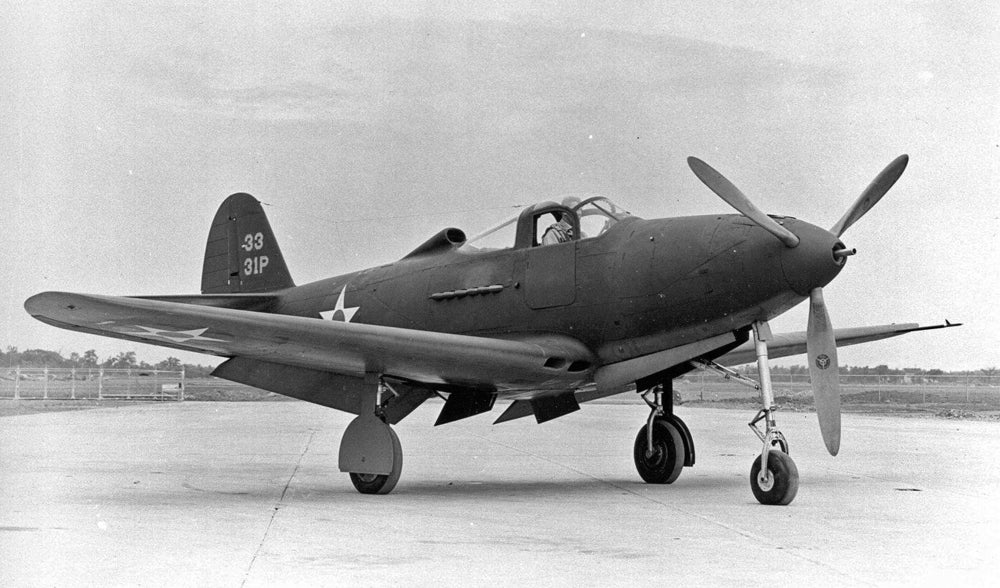
April 6, 1938 – The first flight of the Bell P-39 Airacobra. At the beginning of WWII, the Bell P-39 Airacobra was the principal fighter aircraft in US Army Air Corps service. But the Airacobra often gets criticized as an ineffective aircraft when with compared with later fighters such as the North American P-51 Mustang and Republic P-47 Thunderbolt , and its lack of a turbo-surpercharger certainly rendered it ineffective as a high altitude interceptor or fighter. However apt that criticism might seem, the Airacobra was still a very effective warplane, and proved its mettle against ground targets and low-flying bombers, particularly in the hands of Soviet pilots. In 1937, the USAAC issued the most ambitious requirements to date for a new fighter. They called for 1,000 pounds of heavy armament including a cannon, a tricycle landing gear, a level airspeed of at least 360 mph and a climb rate that could attain 20,000 ft in less than 6 minutes. The requirements also called for a turbo-supercharged Allison engine for high-altitude performance. With all the armament the Army requested, particularly the large cannon, Bell had to find a way to fit it all inside the airframe. So they decided on the innovative solution of placing the engine behind the pilot, with a drive shaft that passed under the cockpit and turned the propeller through a gear system. The placement of the engine helped with the fighter’s center of gravity, and though some pilots were concerned about the drive shaft running underneath the seat, the system proved safe and reliable. With the engine placed behind the pilot, the nose of the Airacobra was empty. So Bell filled it with 37mm M4 cannon , a weapon specifically designed for the Airacobra and manufactured by Oldsmobile. This essentially made the P-39 the first aircraft to be designed around a gun rather than an engine. Because of its heavy recoil, the cannon had to be placed on the aircraft’s centerline, and it fired through the center of the propeller spinner, an arrangement that was made possible by the gearing that drove the propeller rather than a solid prop shaft. In addition to the cannon, the Airacobra was armed with six .50 caliber machine guns, two in each wing and two over the nose firing through the propeller.
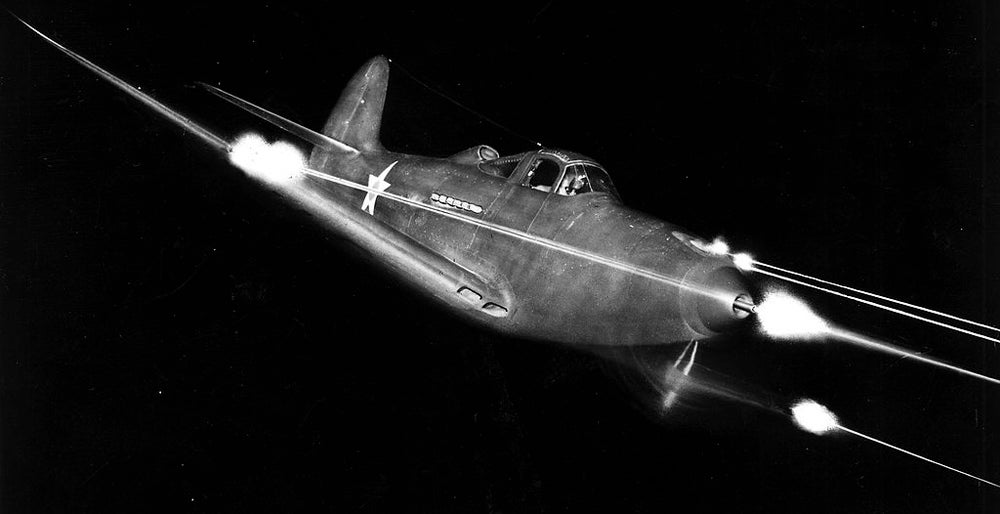
When testing of the XP-39 prototypes commenced, initial speed results were disappointing. The Army ordered that the aircraft be evaluated in a
National Advisory Committee for Aeronautics
(NACA) wind tunnel to see if the fuselage shape could be made more streamlined to increase speed, and it was here that the history of the Airacobra took a significant turn. The turbo-supercharger for the
Allison V-1710
V-12 engine was cooled by a scoop on the left side of the aircraft, and NACA said the ducting had to be redesigned to eliminate the scoop to reduce drag. However, there was simply no place to move the scoop in the tightly packaged fuselage. So
Larry Bell
made the controversial decision to continue development of the P-39 with the turbo-supercharger removed, instead using only a single-stage supercharger. While speeds did increase from the improved aerodynamics, the lack of the turbo-supercharger effectively limited the Airacobra to service below 12,000 feet, rendering it ineffective as an interceptor or high-altitude fighter. And once armor plating was added, the weight increase put a further drag on the Airacobra’s performance. Nevertheless, the P-39 was sent to the Pacific following the outbreak of WWII, where it proved to be a potent weapon against enemy ground targets and shipping. The Airacobra also saw service in the Mediterranean, notably with the
Tuskegee Airmen
of the 99th Pursuit Squadron. The British found the Airacobra almost wholly unsuited to their needs, and only outfitted a single squadron with the type. The rest they sent to Russia. And it was in Russia where the P-39 found its greatest success. The Russians appreciated the heavy firepower provided by the cannon and machine guns, as well as the Airacobra’s rugged construction. They particularly liked the Airacobra’s reliable radio. Nearly half of the 9,588 P-39s built were shipped to Russia, where Soviet pilots used the Airacobra primarily in the air-to-air role. Its heavy armament was particularly lethal against German bombers, but it could also hold its own against German fighters at lower altitudes. Russian pilot
Alexander Pokryshkin
scored 47 of his 59 victories in an Airacobra, making him the highest scoring P-39 pilot of the war. The Airacobra was continuously developed throughout WWII into a myriad of variants, including an attempt at a navalized version called the
XFL Airabonita
, and the larger, more powerful
P-63 King Cobra
, which was adopted by the Soviet Air Force.
(US Air Force photos)
!!! UNKNOWN CONTENT TYPE !!!
!!! UNKNOWN CONTENT TYPE !!!
!!! UNKNOWN CONTENT TYPE !!!
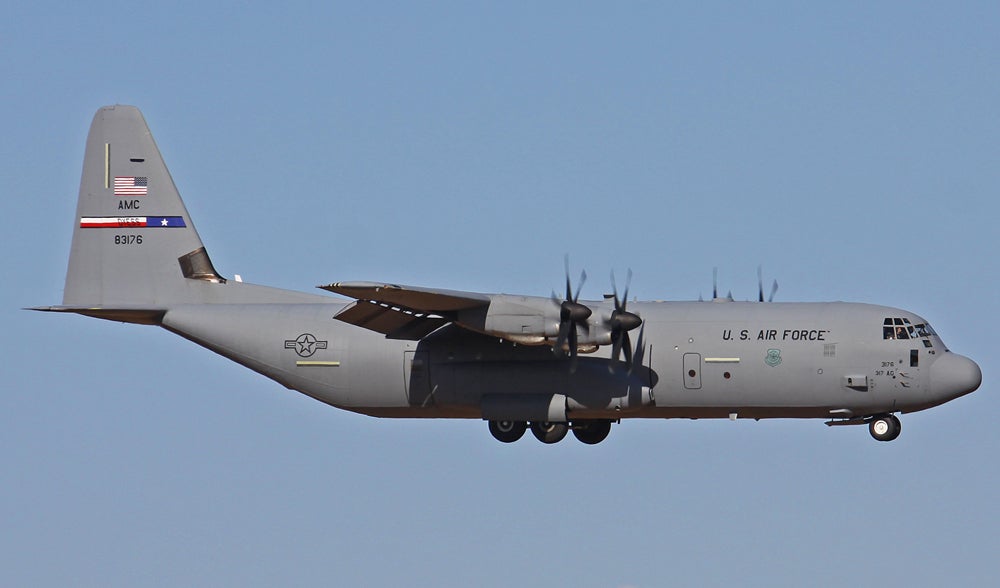
April 5, 1996 – The first flight of the Lockheed Martin C-130J Super Hercules,
the latest version of the venerable Hercules tactical airlifter and the only variant that remains in production. Upgrades incorporated into the J model include new
Rolls-Royce AE 2100
turboprop engines with six-bladed composite scimitar propellers and digital avionics. The Super Herk enjoys a 40% increase in range, a 21% increase in speed and a 41% shorter takeoff distance compared to the E and H models. The J is operated by the US Air Force, Marines and Coast Guard, as well as numerous international partners.
(Photo by the author)
!!! UNKNOWN CONTENT TYPE !!!
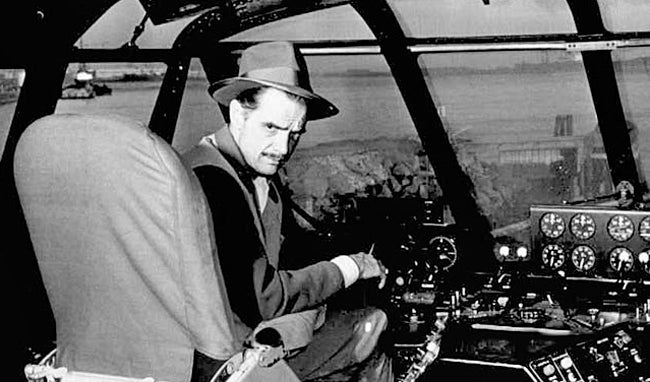
April 5, 1976 – The death of Howard Hughes, a famous yet reclusive tycoon whose business interests included investments, filmmaking and aerospace engineering. Born on December 24, 1905 in Humble, Texas, Hughes formed the Hughes Aircraft Company in 1932, and set numerous world records in the aircraft he produced, though he was not known as a particularly skillful pilot. He is best known for building and briefly flying the H-4 Hercules , popularly known as the Spruce Goose , the largest flying boat ever built, with the largest wingspan of any aircraft in history. Perhaps fittingly, Hughes died on board an aircraft while flying as a passenger from his penthouse in Acapulco to Houston for medical treatment. In a fitting testament to his reclusive life, even the details of his death remain unclear. (Photo author unknown)
!!! UNKNOWN CONTENT TYPE !!!
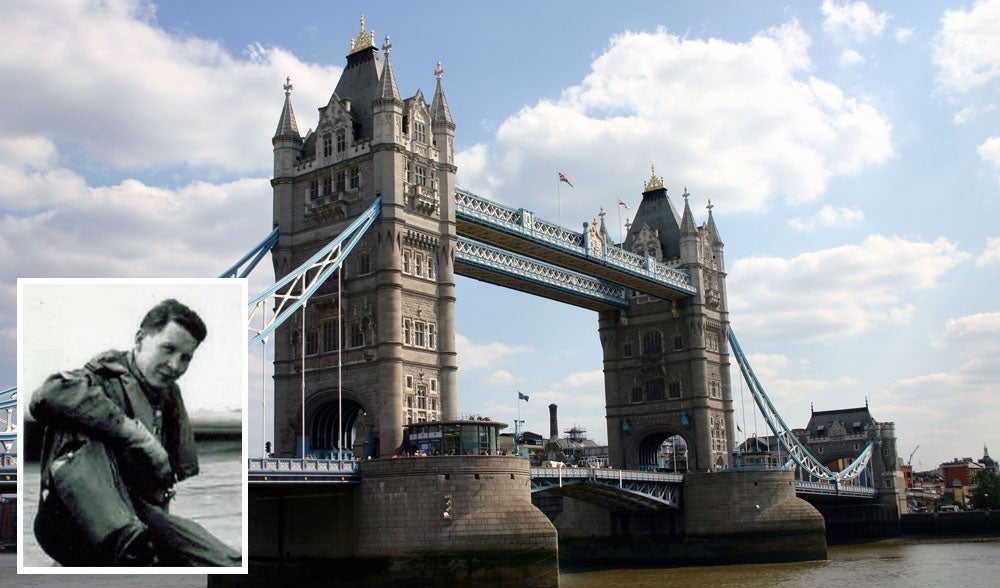
April 5, 1968 – RAF Flight Lieutenant Alan Pollock flies his Hawker Hunter under the top span of the Tower Bridge. Upset by the lack of an aerial display to mark the 50th anniversary of the founding of the RAF, Flt Lt Pollock of No. 1(F) Squadron protested by beating up (buzzing) several RAF airfields in his Hawker Hunter before heading to London. There he circled the Houses of Parliament and saluted the RAF Memorial by dipping his wings, then followed that up with a flight under the top span of the Tower Bridge, a feat that made him the first ever to fly a jet aircraft through the bridge. Pollock then beat up a few more airfields before returning to base inverted at 200 feet. Pollock was arrested, but never faced a court martial, as he was dropped from service on medical grounds before a trial could be held. (Pollock photo via The Tartan Terror ; Tower Bridge photo via Wikimedia Commons )
!!! UNKNOWN CONTENT TYPE !!!
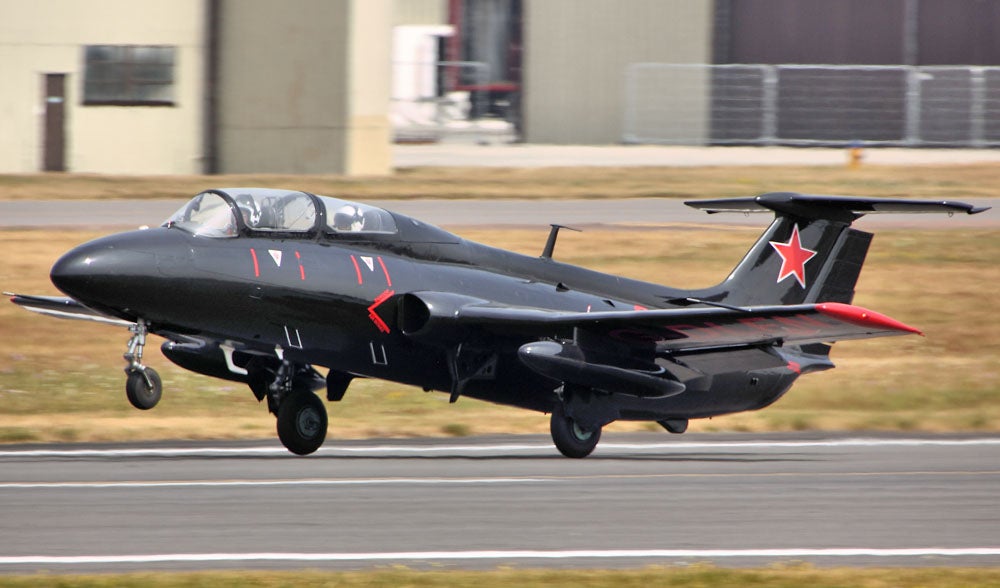
April 5, 1959 – The first flight of the Aero L-29 Delfin, the standard Warsaw Pact jet trainer throughout the 1960s and the first aircraft to be designed and produced in the former Czechoslovakia. The Delfin is a simple, rugged aircraft designed to operate from unimproved runways and is powered by a single Motorlet M-701C turbojet which provides a maximum speed of 407 mph. The student and instructor are seated in a tandem configuration, with the rear instructor’s seat slightly higher. In addition to pilot training, the Delfin also served as a weapons training platform, carrying gun pods, bombs or rockets. A total of 3,500 were produced from 1963-1974. (Photo by Tim Felce via Wikimedia Commons )
!!! UNKNOWN CONTENT TYPE !!!
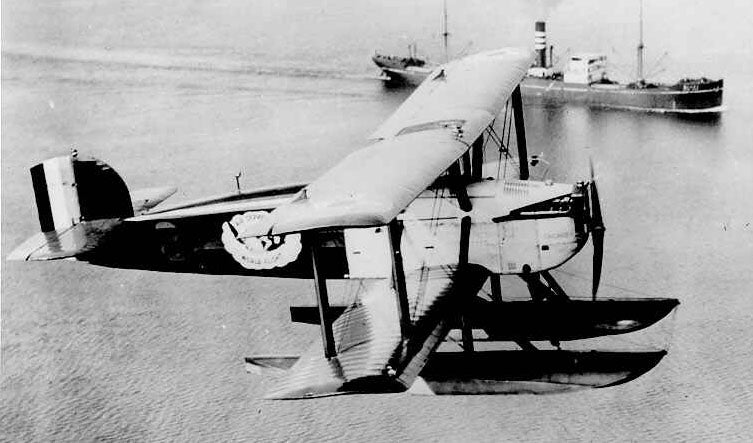
April 6, 1924 – The start of the first successful flight around the world. In 1923, the US Army Air Service requested that Douglas Aircraft Company develop an aircraft specifically for completing a circumnavigation of the globe. Douglas modified five Douglas DT torpedo bombers, and 4 of them departed from Sand Point, Washington and headed west. Owing to crashes along the way, only two aircraft completed the journey, which covered 27,553 miles and took 175 days to complete, landing back in Seattle on September 28 after making 58 stops along the way. The success of the flight helped establish Douglas as a major aircraft manufacturer. (US Army photo)
!!! UNKNOWN CONTENT TYPE !!!

April 6, 1890 – The birth of Anthony Fokker.
Anton Herman Gerard “Anthony” Fokker was born in the Netherlands Indies and was a Dutch pilot, aviation pioneer and aircraft manufacturer. During WWI, Fokker produced some of the most famous German aircraft, including the
Dr.I
triplane which became synonymous with
Manfred von Richtofen
, better known as the Red Baron, and the
D.VII
biplane fighter (which was designed by
Reinhold Platz
). Following the war, the
Treaty of Versailles
prohibited Germany from producing warplanes, so Fokker took his business to the Netherlands where he developed the famous
Fokker F.VII Trimotor
. Fokker moved to the US in 1927, but died of meningitis in 1939.
(Anthony Fokker photo via US Library of Congress; Dr.I photo by Matthias Kabel via
Wikimedia Commons
)
!!! UNKNOWN CONTENT TYPE !!!
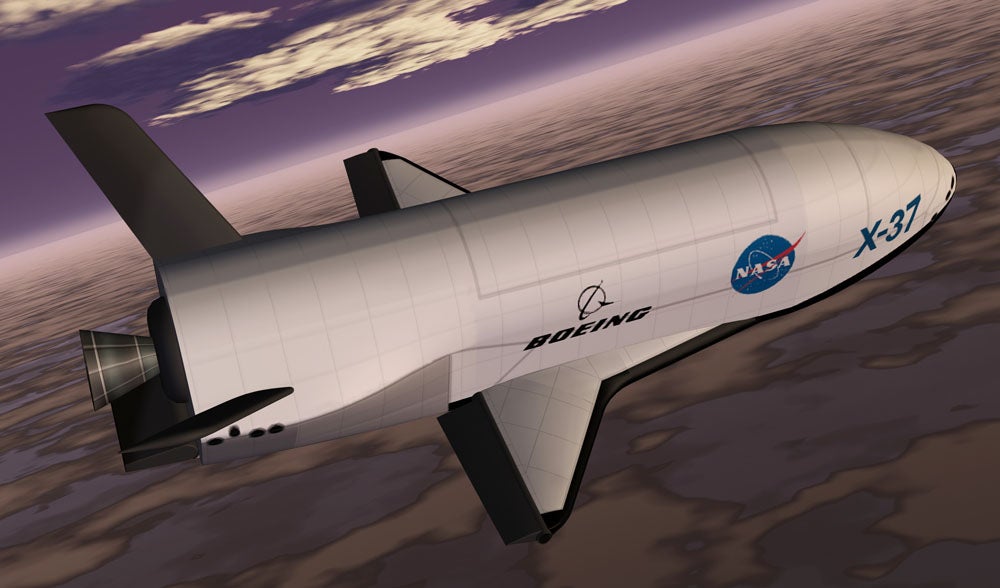
April 7, 2006 – The first free flight of the Boeing X-37. Also known as the Orbital Test Vehicle (OTV), the X-37 is an unmanned, reusable spacecraft that is a 120% scale derivative of the Boeing X-40 . Similar to the much larger Space Shuttle , the X-37 is boosted into orbit by a launch vehicle, then returns to Earth to land as an unpowered aircraft. The X-37 is operated by the US Air Force and has completed 3 orbital missions carrying a classified payload. A 4th mission was launched on May 20, 2015, and the X-37 was expected to remain in orbit for 200 days. However, the X-37 has yet to return to Earth, having spent nearly 700 days in space. (NASA illustration)
!!! UNKNOWN CONTENT TYPE !!!

April 7, 2001 – The launch of 2001 Mars Odyssey, a robotic spacecraft launched into orbit around Mars to gather data about the Martian surface. The spacecraft mapped hydrogen distribution that led to the discovery of vast amounts of ice under the surface of the planet’s polar regions, and also took readings on the amount of radiation on the surface of the planet to help determine any risks associated with a manned landing. The orbiting spacecraft also serves as a communications relay for the Spirit and Opportunity rovers on the Martian surface, and has been responsible for 95% of all data transmitted to Earth. Imagery from Mars Odyssey will also help determine suitable landing sites for future missions. (NASA illustration)
!!! UNKNOWN CONTENT TYPE !!!
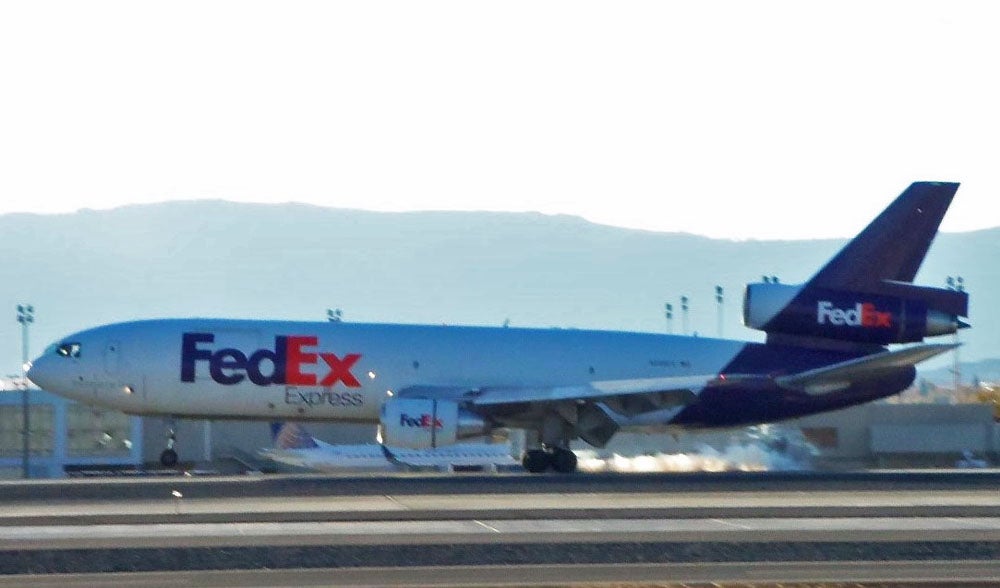
April 7, 1994 – The attempted hijacking of Federal Express Flight 705. Disgruntled Federal Express pilot Auburn Calloway boarded the cargo flight as a deadheading pilot, carrying a guitar case filled with hammers and a spear gun. He planned to kill the pilots with the hammers (using the spear gun as a last resort), then crash the McDonnell Douglas DC-10-30F (N306FE) so his family could collect a $2.5 million life insurance policy. He used the hammers to make the crew’s injuries appear consistent with a crash. Though the pilots were seriously injured in the attack, they managed to subdue Calloway and land safely. Calloway claimed insanity, but was convicted and sentenced to two consecutive life terms. (Photo via Wikimedia Commons )
!!! UNKNOWN CONTENT TYPE !!!

April 7, 1967 – The first flight of the Aérospatiale Gazelle.
Designed for light transport, scouting and light attack duties, the Gazelle was the first helicopter to employ the
fenestron
enclosed tail rotor configuration, which reduces tip vortex loss, protects the tail rotor, and also protects ground crews from the spinning rotor. The Gazelle entered service in 1973, and currently serves the air forces of 20 nations and has seen combat in
Lebanon
,
Rwanda
and the
First Gulf War
. More than 1,700 Gazelles were produced between 1967-1996, and it remains in service today.
(Photo by Alan Wilson via
Wikimedia Commons
)
!!! UNKNOWN CONTENT TYPE !!!
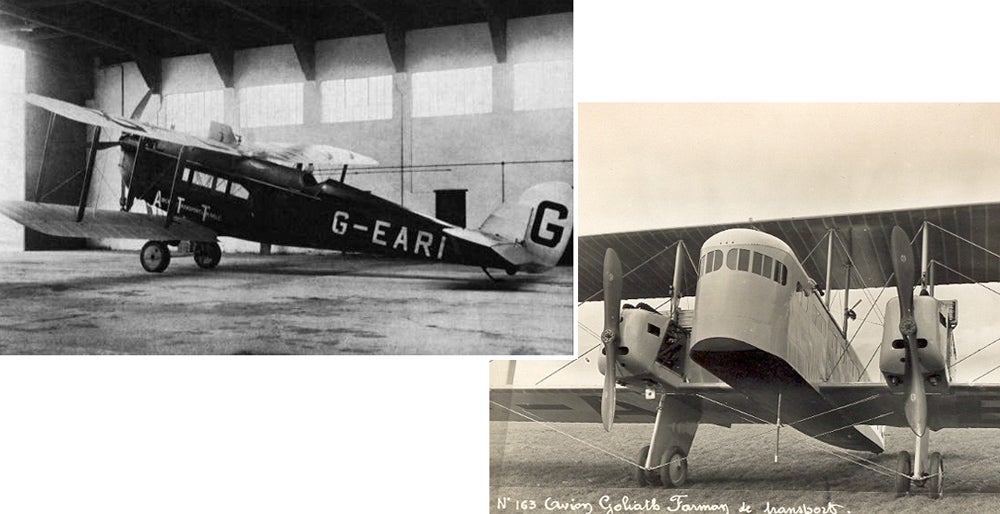
April 7, 1922 – The first mid-air collision between two airliners. One aircraft, a de Havilland DH.18A (G-EAWO), was flying mail from Croydon in England to Le Bourget in France. On board were the pilot and a young steward. The other aircraft, a Farman F.60 Goliath (F-GEAD), was flying in the opposite direction with a pilot, mechanic, and three passengers. With low clouds and drizzle, the pilots were flying just below the clouds and following a road, but the British pilot was keeping the road to his right, while the French pilot was keeping the road to his left, putting them on a head-on collision course. The crash, 60 miles north of Paris, killed all seven occupants. As a result, rules were adopted to agree on a right-side offset when following roads, and official air lanes were adopted for heavily travelled routes. (Photo authors unknown)
!!! UNKNOWN CONTENT TYPE !!!
!!! UNKNOWN CONTENT TYPE !!!
!!! UNKNOWN CONTENT TYPE !!!
!!! UNKNOWN CONTENT TYPE !!!
!!! UNKNOWN CONTENT TYPE !!!
!!! UNKNOWN CONTENT TYPE !!!
!!! UNKNOWN CONTENT TYPE !!!
If you enjoy these Aviation History posts, please let me know in the comments. And if you missed any of the past articles, you can find them all at
Planelopnik History
. You can also find more stories about aviation and aviators at
Wingspan
and
Planes You’ve (Probably) Never Heard Of
.
!!! UNKNOWN CONTENT TYPE !!!
 "RamblinRover Luxury-Yacht" (ramblininexile)
"RamblinRover Luxury-Yacht" (ramblininexile)
04/07/2017 at 12:48, STARS: 1
Here’s a covers-removed picture of the Airacobra.
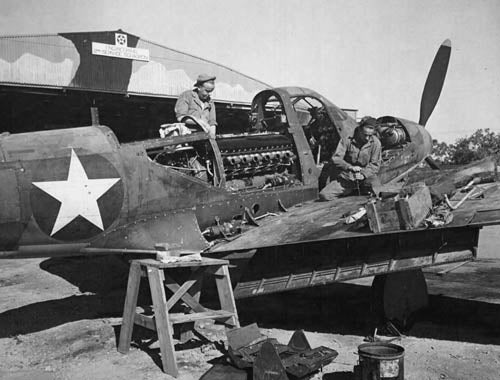
The last time the P-39's cannon came up, I recall sperging about it being an Oldsmobile cannon despite the lack of description at Wikipedia as such grumble grumble, and in the course of that conversation I found a picture of an expo table of Oldsmobile’s
Arsenal of Democracy
offerings with a cannon on it. I cannot now find that picture to add to this post. Sorry.
 "HammerheadFistpunch" (hammerheadfistpunch)
"HammerheadFistpunch" (hammerheadfistpunch)
04/07/2017 at 12:51, STARS: 0
Alan Pollock = badass.
 "Viggen" (viggen37)
"Viggen" (viggen37)
04/07/2017 at 12:54, STARS: 2
Also interesting is how the P-39 and P-63 had a cockpit door rather than the traditional canopy entrance.
 "f86sabre" (f86sabre)
"f86sabre" (f86sabre)
04/07/2017 at 12:55, STARS: 2
We have a King Cobra in our hangar right now. We are painting it for the Commerarive Air Force. I’d get a pic, but it is under a tarp since we have a 737 in there getting painted as well.
 "HammerheadFistpunch" (hammerheadfistpunch)
"HammerheadFistpunch" (hammerheadfistpunch)
04/07/2017 at 12:59, STARS: 1
Saw a couple of pictures of the M4 cannon and thought....that sure looks like a browning design. Sure enough its the typical one/two browning/Colt combo punch. neat.
 "Jcarr" (jcarr)
"Jcarr" (jcarr)
04/07/2017 at 13:07, STARS: 2
She’s apparently going to be at Oshkosh. Looking forward to seeing her.
 "Jcarr" (jcarr)
"Jcarr" (jcarr)
04/07/2017 at 13:17, STARS: 0
P-39 that was at Oshkosh last year. Going to have the CAF’s P-63 this year.
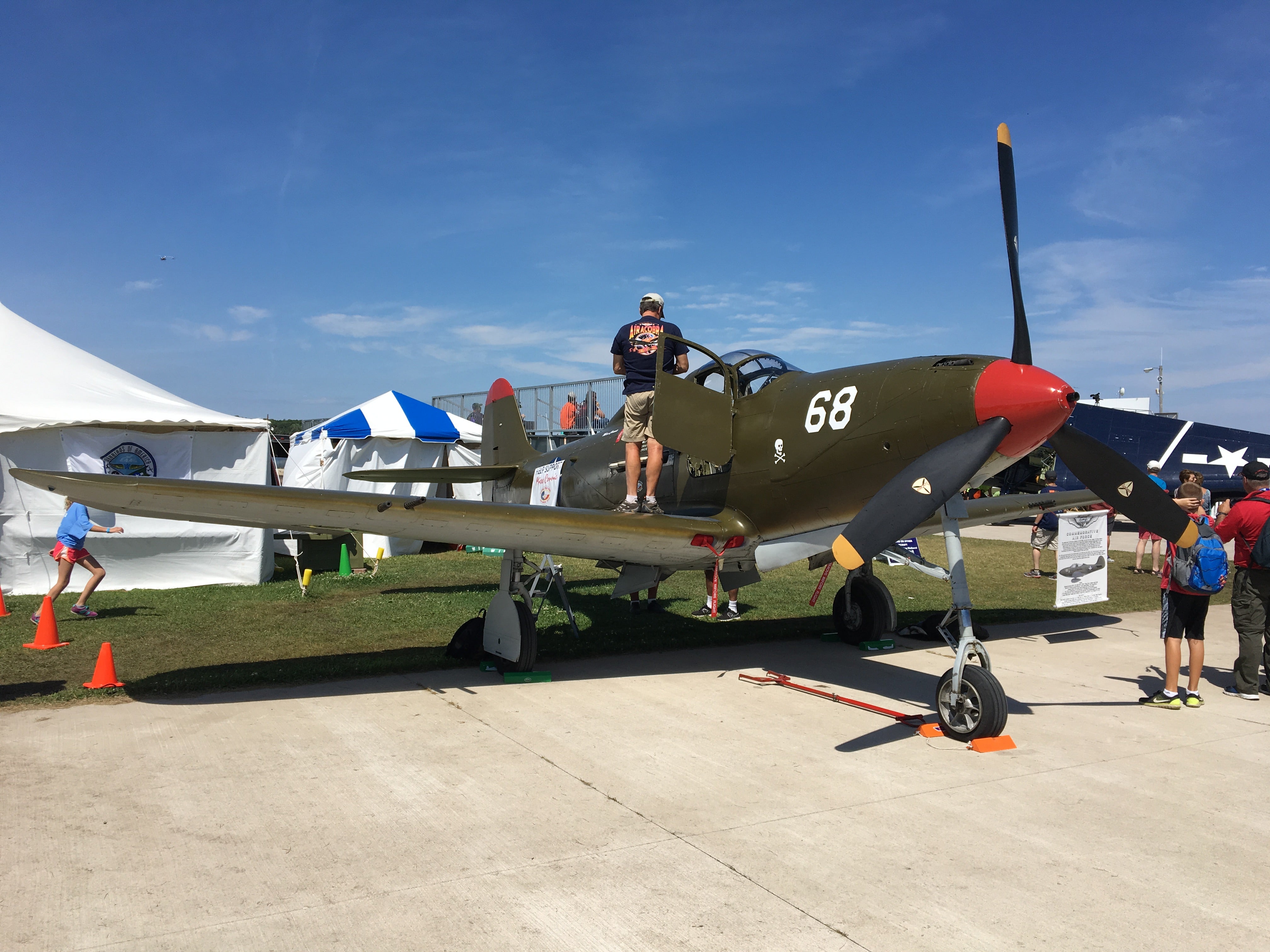
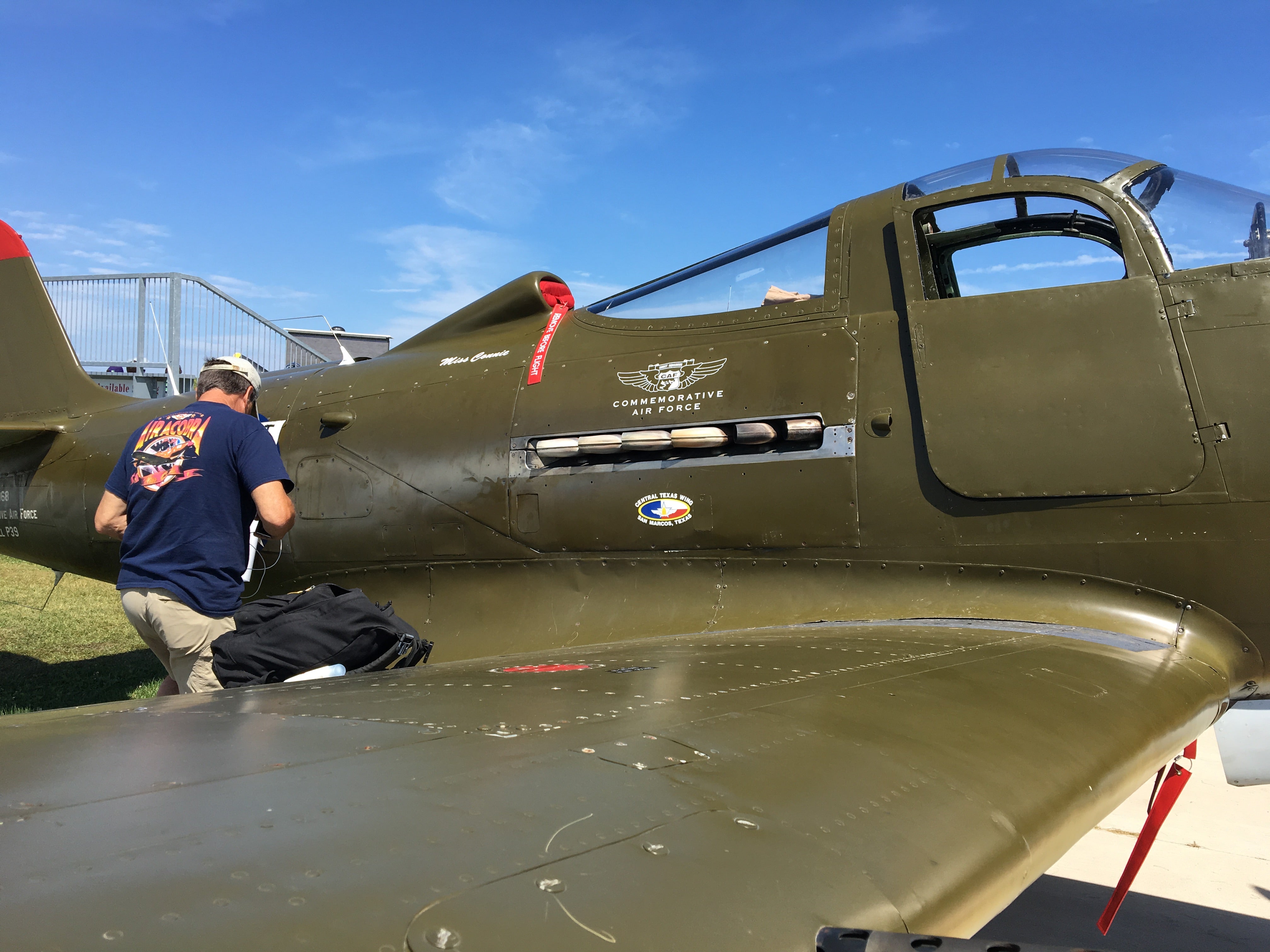
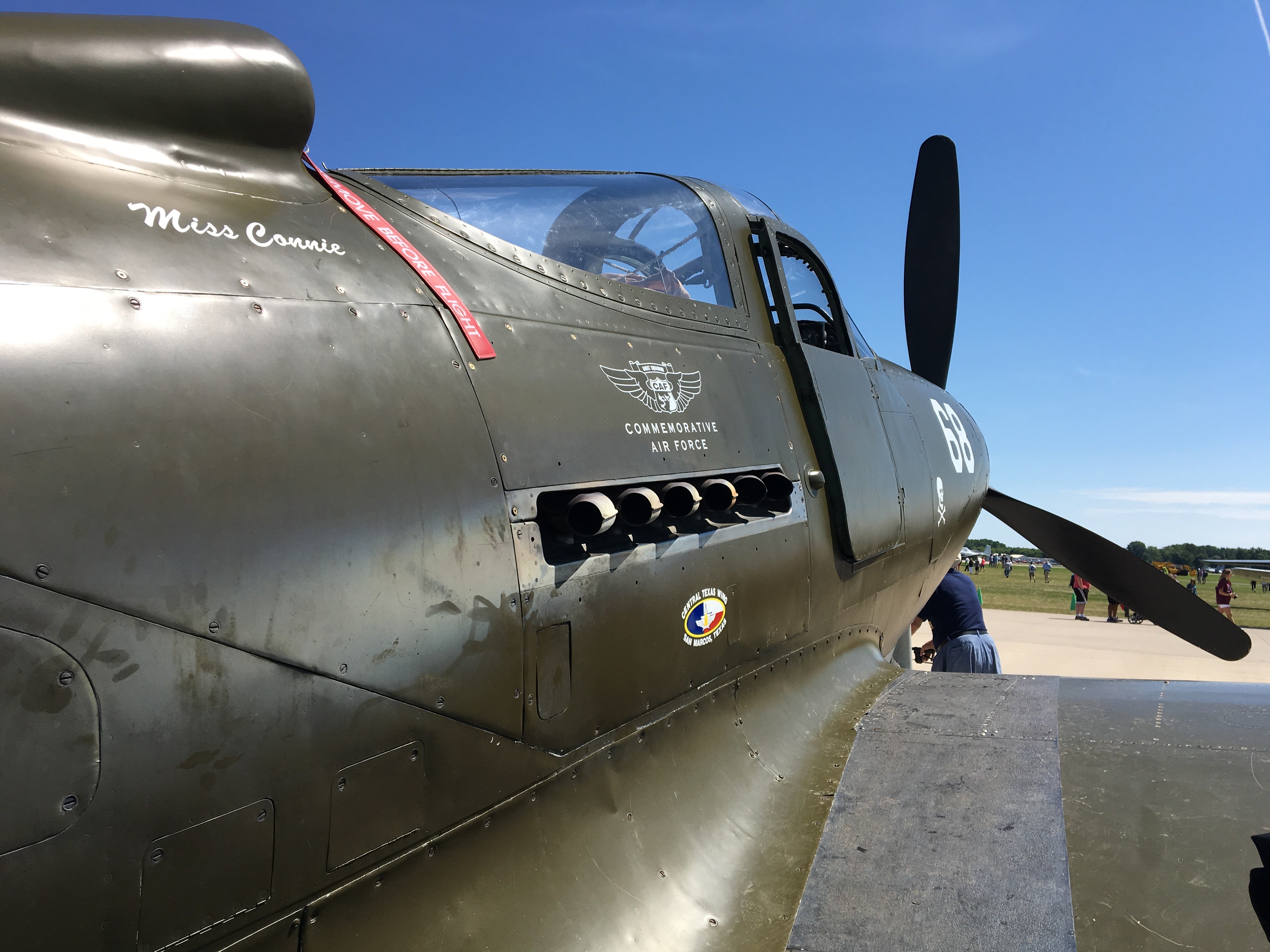

04/07/2017 at 13:21, STARS: 1
Something like this ?

 "RamblinRover Luxury-Yacht" (ramblininexile)
"RamblinRover Luxury-Yacht" (ramblininexile)
04/07/2017 at 13:22, STARS: 2
Nope. It was an actual table with all the goodies on it, like you’d see at a career fair if career fairs were awesome and not lame.
 "RamblinRover Luxury-Yacht" (ramblininexile)
"RamblinRover Luxury-Yacht" (ramblininexile)
04/07/2017 at 13:27, STARS: 2
The Bell Airacuda had two.

You’re right that it has a very JMB look to it, and though I can’t seem to find a mechanism diagram, I think it’s constructed kind of like an open-bolt FA simplified version of an Auto 5.

04/07/2017 at 13:29, STARS: 2
Oh, more like this?
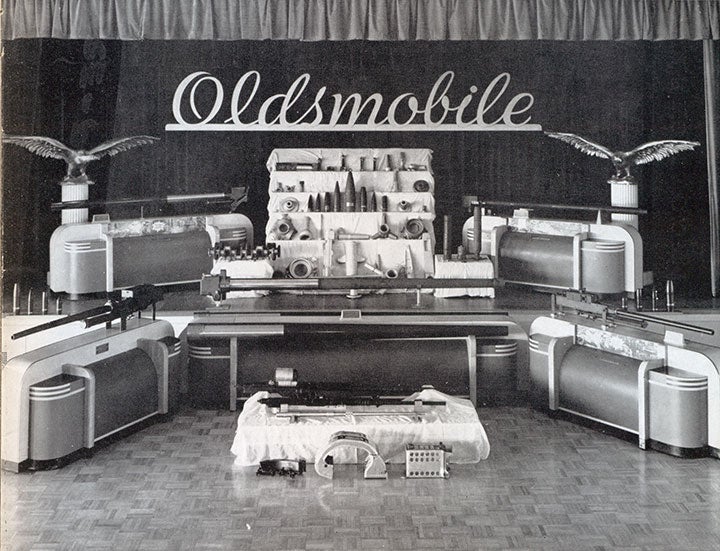
 "ttyymmnn" (ttyymmnn)
"ttyymmnn" (ttyymmnn)
04/07/2017 at 13:29, STARS: 0
Pretty sure I’ve photographed that Cobra before. Neat plane. I like the door.
 "RamblinRover Luxury-Yacht" (ramblininexile)
"RamblinRover Luxury-Yacht" (ramblininexile)
04/07/2017 at 13:32, STARS: 0
Yes. That one exactly. Well done.
 "ttyymmnn" (ttyymmnn)
"ttyymmnn" (ttyymmnn)
04/07/2017 at 13:33, STARS: 1
The Airacuda was a wild idea. Not sure I would have watned to ride in those gun pods.
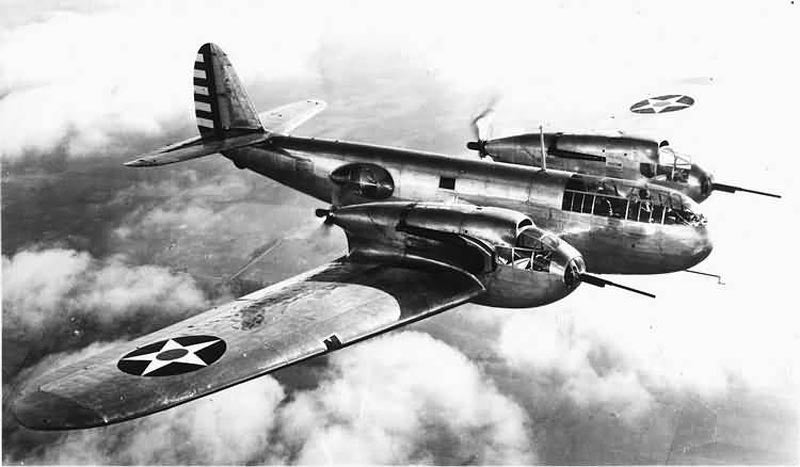
 "ttyymmnn" (ttyymmnn)
"ttyymmnn" (ttyymmnn)
04/07/2017 at 13:34, STARS: 0
You guys will paint anything! What does it cost to paint a P-63?
 "ttyymmnn" (ttyymmnn)
"ttyymmnn" (ttyymmnn)
04/07/2017 at 13:35, STARS: 0
Yup. It must have been hell to bail out of.
 "ttyymmnn" (ttyymmnn)
"ttyymmnn" (ttyymmnn)
04/07/2017 at 13:35, STARS: 0
Total badass. I’d love to have a pint or two with him.
 "RamblinRover Luxury-Yacht" (ramblininexile)
"RamblinRover Luxury-Yacht" (ramblininexile)
04/07/2017 at 13:43, STARS: 1
The whole dynamic was bizarre. Instead of having a painfully limited link ring of rounds for the 37mm, placing a crewman to reload them with more like a hundred... while making it completely wretched for them to perform their job and deferring fire control to the pilot in most cases. It would really have benefited from a helical drum like on the A-10 and removal of the extra crew (or position improvement), but nobody had thought of that. They were trying to do too many things - articulated cannon were a step beyond what was really needed, and making them German-style remote control because the gunners weren’t equipped to do their job...
 "f86sabre" (f86sabre)
"f86sabre" (f86sabre)
04/07/2017 at 13:45, STARS: 0
It isn’t costing them anything.
 "ttyymmnn" (ttyymmnn)
"ttyymmnn" (ttyymmnn)
04/07/2017 at 13:49, STARS: 1
Well played, Delta